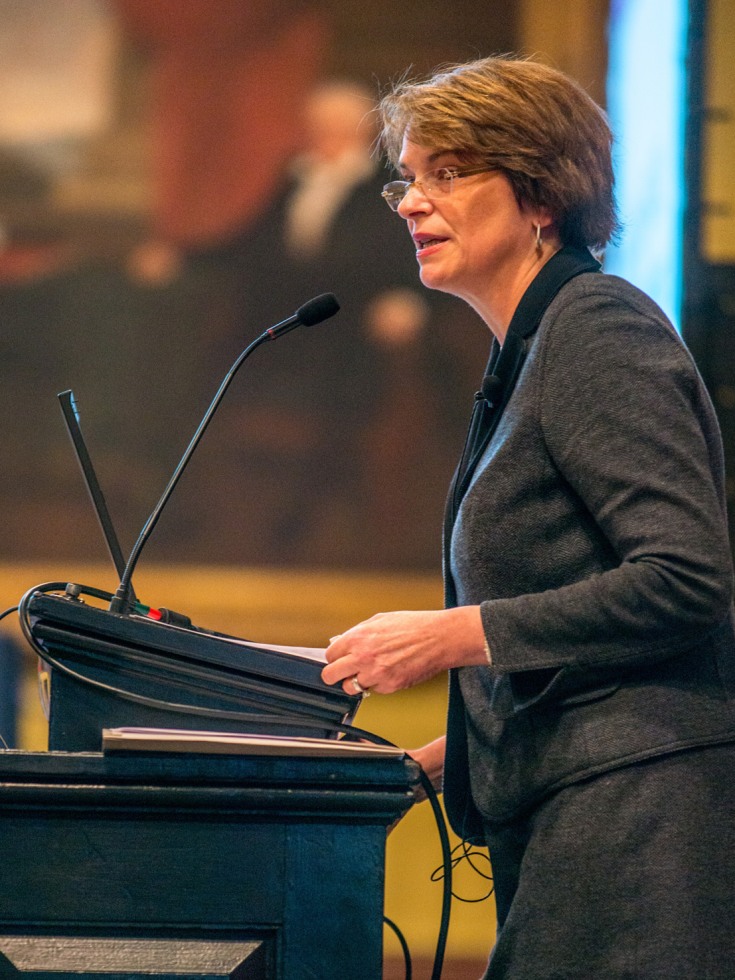When people begin and then continue life with poorer health, less income and wealth, higher degrees of stress, and less access to education and health care, their health itself will suffer, and that in turn can make improving any of their other disadvantages harder. The statistical evidence shows that this complex interplay of difficulties disproportionately affects black people and underlies the significant racial disparities evident in health quality in the United States, said Brown University President Christina Paxson, delivering the 2015 Levinger Lecture Monday, Nov. 16, 2015.
“These gaps are large and they are deeply disturbing,” said Paxson, an economist who has studied and taught about the issue for years.
“Now, when this nation is so focused on issues of structural racism and discrimination, it seems especially right to give a renewed emphasis on racial disparities in health,” she said to an audience that crowded in Sayles Hall for a talk entitled, “Unpacking Racial Health Disparities.”
Paxson’s research focuses on economic development and health, with specific attention to the relationship between economic status and health over the life course. She shared the lecture’s stage with Dr. Nicole Alexander-Scott, director of the Rhode Island Department of Health, who said that addressing the social and environmental determinants of health are necessary to reduce disparities. Doing so is among her top three priorities in office, Alexander-Scott said.
